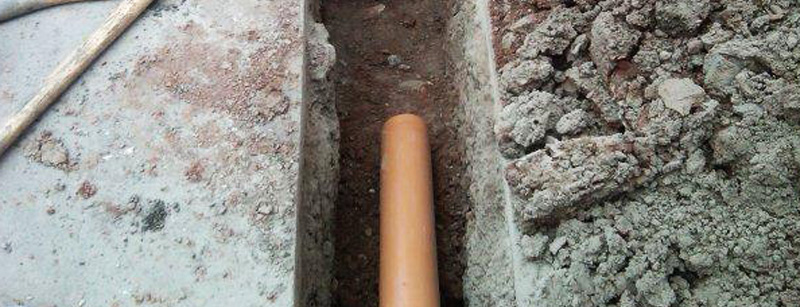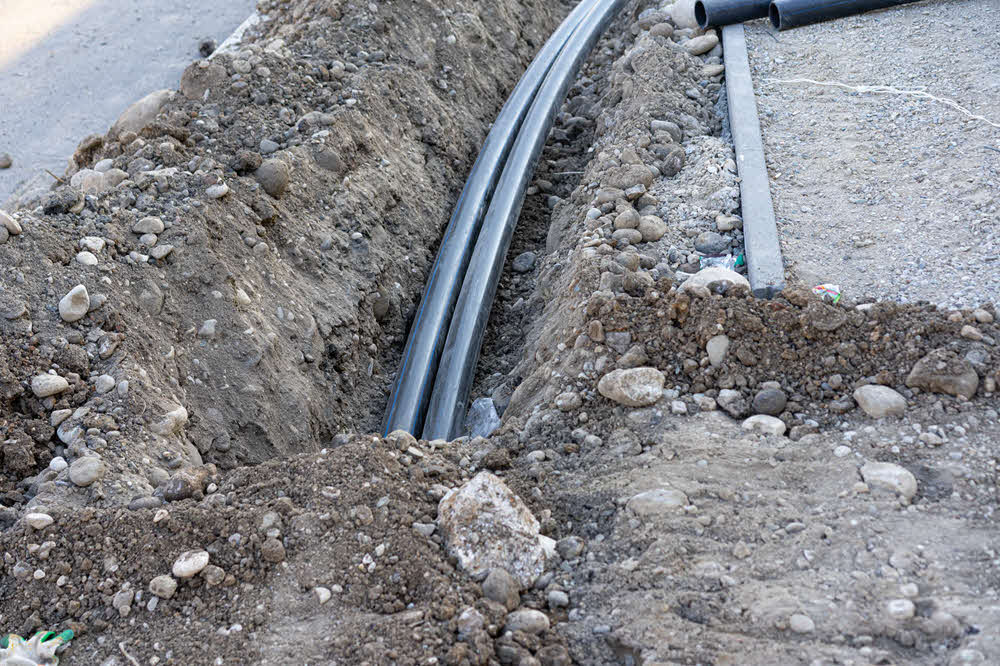Pipe Laying Servicesin Richmond MI
Pipe Laying Services to Support Efficient Infrastructure Development
We Are Locally Owned & Operated For Over 37 Years
Contact Us Today!
We Serve Businesses In And Around The Following Cities:
About Pipe Laying Services
Introduction
In the heart of the bustling city of Richmond, ambitious commercial projects continue to reshape the city skyline and local infrastructure. Among the many building blocks that contribute to this metamorphosis, one service stands as vital yet unsung – Pipe Laying. As a significant aspect of both above-ground and subterranean architecture, pipelaying serves as an essential piece of the puzzle in the creation, renovation, and maintenance of commercial properties.
The Pivotal Process of Pipe Laying
From the installation of running propane lines underground for heating requirements to the placement of PVC stormwater pipes for drainage, the pipelaying process in commercial property construction is multifaceted and requires great attention to detail. Copious planning and coordination, along with a deep understanding of various materials and methods, such as PVC stormwater pipe installation and running gas pipes underground, are needed. Sensibly, this is best left in the competent hands of experts, such as D&J Contracting — a fixture in pipe laying in Richmond that provides top-notch pipelaying services. Their proficiency extends to the stormwater drain pipe installation, underground sewer pipe installation, among others, making the overall process efficient, smooth, and robust.
Attending to Commercial Needs
Stemming from the demands of a modern commercial property usually comes the need to house different systems within the infrastructure. Running propane lines underground, an essential aspect of pipelaying, provides heat for cooking, hot water, and more, to commercial businesses. Adhering to the highest standards in safety, D&J Contracting undertakes this critical requirement. Similarly, having a well-fitted drain pipe for rainwater is crucial for effective water management, ensuring the longevity of the underlying foundation and the continued functionality of the property.
The Impact and Benefits of Expert Pipe Laying
Hardly discernible yet significantly impactful, the installation of underground storm pipes and sewer pipes present undeniable value to any commercial property. Scenarios that demonstrate the importance of professional pipelaying include instances of heavy downpour. With the use of good-quality underground storm pipes, the issue of flooding can be gracefully handled, preventing unnecessary property damage and thereby reducing maintenance costs.
Another essential part of pipelaying, namely running gas pipes underground, also possesses its unique benefits. Safe and secure propane or gas lines promise unbroken services and safety for both employees and patrons of commercial properties. The teams at D&J Contracting ensure that such aspects are given meticulous attention during installation.
Richmond: A Case Study in Enhancing Urban Infrastructure
Looking at Richmond city, the usage of pipelaying services, whether for running propane lines underground or for setting up underground storm pipes, have proved invaluable in bolstering the continual development of the city’s commercial landscape. From repurposing historic sites with modern amenities to erecting new commercial establishments, efficient pipe laying has been at the heart of these transformations.
Partnering with Richmond’s Trusted Pipe Laying Service Provider
D&J Contracting exceeds the industry standards with a team of expert pipe layers. Known for their professionalism, they commit to delivering results that satisfy and surpass the clients’ expectations. Their expertise in pipe laying, as mentioned, ranges from underground storm pipe installation to setting up a drain pipe for rainwater helps Richmond businesses run effortlessly and enables them to provide uninterrupted service to their patrons.
Final Thought
Ultimately, pipelaying is an art as much as it is a skill. The professionals at D&J Contracting have beautifully mastered this art without impacting the natural charm of Richmond city. By maintaining a balance between service quality, safety, and efficiency, they enhance the wellbeing of commercial spaces in Richmond, one pipe at a time. With skilled pipe layers, your next commercial project in Richmond can benefit greatly. Reach out to D&J Contracting and experience the difference that comes from a truly dedicated and expert pipelaying service.
Pipe Laying Services Gallery


Call Us Today to receive your Free Quote for
Pipe Laying in Richmond
Serving: Richmond, Michigan

About Richmond, Michigan
In 1835, Erastus Beebe set out with two brothers and several other people to create a new city out of a wilderness area in Michigan. He founded Beebe’s Corners, which in 1878 agreed to join with the two nearest neighboring communities of Ridgeway and Cooper Town to form the village of Richmond. In 1879, the Michigan Legislature officially created the village charter. In 1989, the city annexed the Muttonville area of Lenox Township, parts of Richmond Township in Macomb County, and part of Casco and Columbus Townships in St. Clair County.
Richmond is 38 miles (61 km) northeast of downtown Detroit, 16 miles (26 km) northeast of Mount Clemens, the Macomb county seat, and 26 miles (42 km) southwest of Port Huron, the St. Clair county seat. Highway M-19 passes through Richmond as its Main Street, leading north 6 miles (10 km) to Memphis and south 7 miles (11 km) to New Haven.
The city is adjacent to Richmond Township and Lenox Township in Macomb County, although it is administratively autonomous. It is also adjacent to St. Clair County’s Columbus Township and Casco Township.
According to the United States Census Bureau, Richmond has a total area of 2.92 square miles (7.56 km), of which 2.89 square miles (7.49 km) are land and 0.03 square miles (0.08 km), or 1.16%, are water.
- Muttonville is in the southeastern part of the city on the boundary with adjacent Casco Township in St. Clair County at 42°47′47″N 82°44′07″W / 42.79639°N 82.73528°W. It was so named because it was the principal slaughterhouse for what was predominantly a sheep raising area.
| Census | Pop. | Note | %± |
|---|---|---|---|
| 1880 | 750 | — | |
| 1890 | 1,074 | 43.2% | |
| 1900 | 1,133 | 5.5% | |
| 1910 | 1,277 | 12.7% | |
| 1920 | 1,303 | 2.0% | |
| 1930 | 1,493 | 14.6% | |
| 1940 | 1,722 | 15.3% | |
| 1950 | 2,025 | 17.6% | |
| 1960 | 2,667 | 31.7% | |
| 1970 | 3,234 | 21.3% | |
| 1980 | 3,536 | 9.3% | |
| 1990 | 4,141 | 17.1% | |
| 2000 | 4,897 | 18.3% | |
| 2010 | 5,735 | 17.1% | |
| 2020 | 5,878 | 2.5% | |
| U.S. Decennial Census | |||
As of the census of 2010, there were 5,735 people living in the city. The population density was 2,012.3 inhabitants per square mile (777.0/km). There were 2,479 housing units at an average density of 869.8 per square mile (335.8/km). The racial makeup of the city was 94.2% White, 1.0% African American, 0.3% Native American, 0.2% Asian, 0.2% Pacific Islander, 2.6% from other races, and 1.5% from two or more races. Hispanic or Latino of any race were 4.6% of the population.
As of the census of 2000, there were 4,897 people, 1,977 households, and 1,332 families living in the city. The population density was 1,691.6 inhabitants per square mile (653.1/km). There were 2,062 housing units at an average density of 712.3 per square mile (275.0/km). The racial makeup of the city was 95.43% White, 0.25% African American, 0.31% Native American, 0.82% Asian, 0.18% Pacific Islander, 1.86% from other races, and 1.16% from two or more races. Hispanic or Latino of any race were 4.74% of the population.
There were 1,977 households, out of which 31.9% had children under the age of 18 living with them, 53.1% were married couples living together, 10.1% had a female householder with no husband present, and 32.6% were non-families. 27.8% of all households were made up of sole individuals and 11.0% had someone living alone who was 65 years of age or older. The average household size was 2.45 and the average family size was 2.99.
In the city the population was spread out, with 24.2% under the age of 18, 9.0% from 18 to 24, 30.8% from 25 to 44, 22.7% from 45 to 64, and 13.3% who were 65 years of age or older. The median age was 36 years. For every 100 females there were 92.1 males. For every 100 females age 18 and over, there were 89.6 males.
The median income for a household in the city was $43,378, and the median income for a family was $57,917. Males had a median income of $41,519 versus $26,445 for females. The per capita income for the city was $21,384. About 4.8% of families and 6.2% of the population were below the poverty line, including 7.2% of those under age 18 and 5.4% of those age 65 or over.
The Richmond Community School District covers areas of Richmond, Lenox, Casco, and Columbus townships. It includes an elementary, middle, and high school. In 2002, it had approximately 2,000 full-time students and a teacher/student ratio of 1:20. St. Augustine is a Catholic Elementary School in the city and St. Peter’s is a Lutheran Elementary School in the city.
Call Us Today to receive your Free Quote for
Pipe Laying in Richmond
Related Services in Richmond, Michigan
We Serve Businesses In The Following Zip Codes:
48007, 48015, 48021, 48026, 48035, 48036, 48038, 48042, 48043, 48044, 48045, 48046, 48047, 48048, 48050, 48051, 48066, 48071, 48080, 48081, 48082, 48083, 48084, 48085, 48088, 48089, 48090, 48091, 48092, 48093, 48098, 48099, 48225, 48230, 48236, 48310, 48311, 48312, 48313, 48314, 48315, 48316, 48317, 48318, 48397